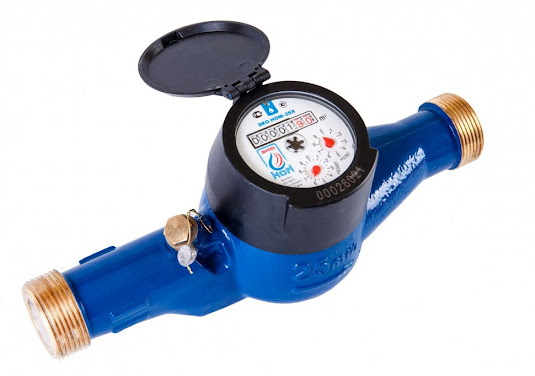A flow meter is a device that measures the flow rate of a liquid or gas. It can measure the amount of water used by your home or building, and it also can detect leaks. This makes it useful for monitoring plumbing systems and sewer lines, too. Flow meters are used in many industries to track production efficiency, process control, and safety. In this article, we'll explore what exactly water flow meters are, how they work, and which types are available so you can choose the right one for your next project!
What Are Water Flow Meters?
Water flow meters are devices that measure the flow rate of water. They are commonly used in a variety of different applications, including municipal water systems and industrial plants. Water flow meters can be used in water treatment plants to measure the quantity of water being processed by a given facility; they can also be used in irrigation systems to monitor how much water is being pumped through each line.
Water meters can also be installed in residential homes so that homeowners know how much they're spending on their monthly supply bills. This can help them decide whether it's worth it to install energy-efficient appliances and fixtures such as faucets with low flows or even replace toilets with ones that use less than 1 gallon per flush (GPF).
Types of Water Flow Meters
There are a few different types of water flow meters that you can choose from, each with its own benefits.
-
Velocity Flow Meter
Velocity Flow Meter: A velocity flow meter is a type of positive displacement flow meter that measures the flow of a fluid by measuring the velocity of the fluid. The velocity flow meter uses pulsation technology to calculate how much fluid has passed through it and then converts this measurement into an accurate reading on its digital display. It's an excellent choice for smaller-scale industrial applications where accuracy is paramount, but it can't handle larger flows or higher pressures.
-
Positive Displacement Meters
Positive displacement meters are also known as rotary or turbine meters. They have a rotor with a number of blades arranged around it, like the blades on a fan. As water passes through the meter, the rotor turns, and each blade passes through a slot in the rotor.
The rotor is made up of two disks: one external and one internal. A seal between these two parts forms an air chamber that allows the positive displacement to occur when water enters this space; i.e., it forces air out while allowing water to pass through its central channel. When you apply pressure to this chamber (by turning your faucet on), the air inside will be pushed out by atmospheric pressure until it reaches atmospheric pressure outside, after which point no more flow will take place until the additional vacuum is created by opening more taps or opening up other plumbing fixtures such as showers, etc.
-
Ultrasonic Meters
Ultrasonic meters use ultrasonic sound waves to measure flow. This type of meter works by sending a pulse of ultrasonic sound waves through the pipe and measuring the time it takes for the sound waves to return. They're fast, accurate and simple to install, but they can be quite expensive if you need multiple units on your installation.
Ultrasonic meters are great if you need accurate measurements over long distances because no special hardware is required (other than an outlet). They're also excellent for installations where there isn't enough room for a mechanical or electromagnetic meter. However, there are some disadvantages: You can only measure one direction at once with an ultrasonic meter; you must use specialized tools when installing them, and they tend not to work well in high-pressure applications like fire hydrants or sprinkler systems because of their small diameter pipes which don't have enough surface area for adequate transmission or reflection of pulses back into transmitter coils located inside transmitters' housings
-
Magnetic Flow Meters
In the past, magnetic flow meters were used for large industrial processes. Today, they're still a reliable and accurate way to measure fluid flow. Magnetic flow meters have been around since the early 1900s, but they're still a popular choice for many industries because of their simplicity and durability.
Magnetic flow meters work by using electromagnetic induction to detect changes in magnetic fields created by flowing liquids or gases. As the liquid flows through a pipe system containing magnets of alternating polarity, it produces an alternating magnetic field that can be detected by sensors at each end of the pipeline—this is known as an alternating current (AC). The number of pulses per unit time indicates how much fluid has moved through a pipe during that period; these measurements are then translated into gallons per minute (GPM) or litres per second (LPS).
Conclusion
As with many things in life, all water flow meters are not created equal. Many types of meters excel in one field while struggling in another. While it may be tempting to go with the cheapest option, consider what you will be using your flow meter for and budget accordingly. The last thing you want is to buy a new meter only to find out that the type you purchased doesn't have the features you need or won't work well under certain conditions. There is no such thing as an 'all-in-one solution' when it comes down to choosing an accurate water flow measurement device, so take some time and do your research before making a purchase decision!

Comments
Post a Comment